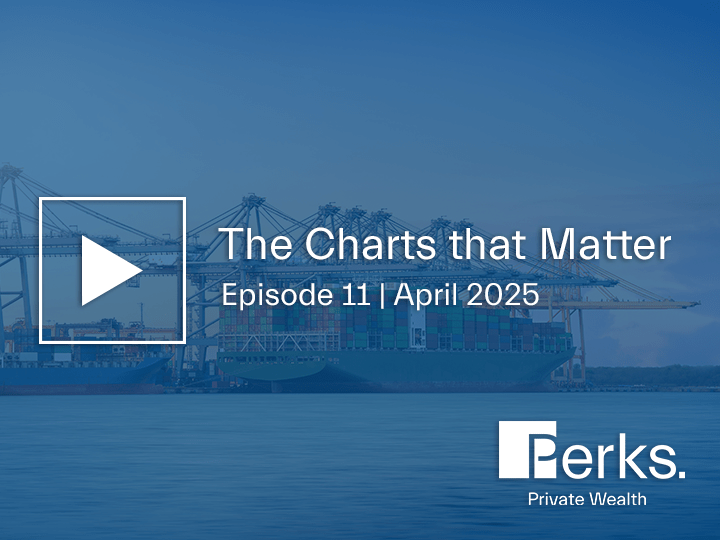The Global Reach, Money & Life Magazine
Posted on 17/8/2020
Private Wealth
Overview:
Perks Private Wealth Director, Simon Wotherspoon and Head of Investment Research, Jason Russo were recently asked by leading industry publication Money & Life Magazine for their expert insights on international equity markets during a time of significant global volatility. Check out the full article below to hear their thoughts on why better than expected global economic rebounds could spell a unique opportunity for savvy investors and fund managers alike. As published in the FPA Money & Life Magazine, August 2020.
As the world slowly recovers from the COVID-19 pandemic, investors are being reminded of the opportunities and diversification benefits of global equities. Jayson Forrest reports.
Gripped by COVID-19 and an escalation in geopolitical tensions, it’s hardly surprising that the past six months have been hugely unpredictable and volatile for global and local markets.
Recently, sentiment has turned negative on concern that the spreading coronavirus could force policymakers to slow the pace, or reverse, business re-openings, while the International Monetary Fund (IMF) downgraded its outlook for the world economy, projecting a significantly deeper
recession and slower recovery than it anticipated in April.
Add to this an escalation in cyber ‘cold war’ tensions, increasing angst between China and the West, and a potential second wave of COVID-19, it appears volatility will continue to shape markets for some time to come.
According to Perks’ director Simon Wotherspoon CFP® and his colleague Jason Russo – Head of Investment Research at Perks – the impact of policy easing and the introduction of government stimulus packages cannot be overestimated. They believe the swift action by central
banks has eased many of the tensions in financial markets that built up in February and March.
“Credit markets have reopened. Capital outflows have stabilised across emerging market debt and equity funds,” says Simon. “Meanwhile, governments have implemented significant fiscal programs that have gone a long way to relieve the worries over permanent structural damage
and the scarring of economies that might otherwise have occurred during the period of lockdown.”
Jason agrees, adding that we have recently seen an unexpected recovery, as the share market continues to rise, spurred by government stimulus and a sense that the global economy is beginning to normalise, with tollways in the U.S. returning to January levels, while foot traffic in European malls is back to 80 per cent of their pre-crisis levels.
So, given this rebound in markets around the world, should financial planners be re-considering global equities as part of their clients’ investment portfolios?
Hedging Against Volatility
The Chief Investment Officer and Portfolio Manager at Bell Asset Management, Ned Bell, says planners should definitely continue to look at global opportunities. And while the impact of COVID-19 has not been as severe in Australia compared to other countries, he believes there are still some very good companies and sectors overseas that you just cannot access in Australia.
“We saw a big sell-off in March and that gave us a great opportunity, as an active manager, to pick up some of the best quality companies available. And I think we will get more of those opportunities. This is a really good time to buy high quality companies, particularly when they are out
of favour.”
Despite the current volatility in the market, global equities continue to provide significant diversification benefits to an investor’s portfolio, particularly in respect to a typical Aussie equities investor, where most portfolios are heavily concentrated on a relatively narrow universe of banks and mining companies.
“When you look overseas, you can get exposure to high quality tech companies, healthcare and consumer discretionary stocks that you simply don’t get exposure to by investing in the local market,” says Ned.
It’s a view supported by Alex Pollak – the Chief Investment Officer and founder of Loftus Peak, a global funds manager with a focus on disruptive businesses.
“The global companies we invest in have products or services that are either not replicable, or not easily replicable, by companies in Australia,” Alex says. “For example, big cloud and data services companies, and businesses that have a global reach with their products.
“Investing globally means Australian investors have access to significant growth profiles that wouldn’t necessarily be available in Australia. The share prices of these global companies have performed well over a protracted period, but there is arguably still plenty of upside left.”
Jason agrees: “In Australia we have limited access to some of the rapidly growing tech sectors, with concentration typically in materials and financials. However, both these sectors face ongoing challenges, so investing overseas provides much broader access to growth sectors.
“Investing overseas in unhedged equities typically provides a ‘hedge’ in volatile markets. We saw this as the COVID-19 panic set in during March. Unhedged international equities held up much better than Australian shares.
“So, when you have the right combination of strategies that deliver returns in a smart way, it gives you a portfolio that is more resilient to changes in correlations and to market events, a role in which global equities plays a key part.”
As an asset class, Jeff Thomson – a portfolio manager at Alphinity Investment Management – agrees that diversification and access to greater investment opportunities are two compelling reasons to stay invested in global equities. But he also includes another important reason – relative value.
“Global equities offer good relative value compared to other asset classes. In a world of zero interest rates and a U.S. 10-year bond yield of approximately 60bps, the yield gap of global equities is below average, suggesting that it’s still a relatively cheap asset class,” Jeff says.
Strong Market Rebound
Yet, despite all the global volatility this year, markets have recorded strong rallies and are near their highs. It sounds counter-intuitive, but it’s something Ned cautions planners to be aware of.
“The reality is markets have overshot on the upside. I always think about what a market is pricing in and then what’s realistic in terms of what is being priced in. For example, if you look at the MSCI World Index, it’s basically back to where it was in October 2019. So, it’s pricing in a very similar outlook to what was priced in at October (pre-COVID), which does seem ridiculous.
“So, the index is now pricing in a U-type recovery, suggesting that the COVID-19 crisis will subside, which it’s clearly not and actually seems to be getting worse. And it’s also pricing in a very sharp earnings recovery next year, which looks increasingly unlikely.”
But why have markets rebounded so strongly? According to Alex, it’s a result of a relatively small number of very large disruptive companies, like
Amazon and Microsoft, that have driven the market higher during the current coronavirus pandemic.
“Two months into the COVID-19 pandemic, Microsoft discovered that elements of its two-year growth plan for the digitisation of services had happened in just a few weeks. This acceleration of digitisation, which enabled people and businesses to continue operating remotely, is what lit a bonfire under the stock prices of some of these companies.”
It’s a view supported by Jason, who says much of the rise in markets has been concentrated on those companies that are perceived to have been the beneficiaries of the shutdown.
“Global equity markets, which have now bounced back to be close to flat for 2020, are being led by the winners in this new environment, such as IT and e-commerce,” he says.
However, while tech stocks have carried the markets back to near all-time highs, it’s worth remembering that over 60 per cent of stocks are still more than 20 per cent away from their prepandemic highs.
“So, while companies like Amazon, Netflix and Microsoft have thrived, many stocks have been left behind in the recent rally. This bifurcation, or
separation, now sees the top five stocks – Facebook, Amazon, Apple, Alphabet and Microsoft – account for more than 20 per cent of the U.S. market’s entire value, which is the most concentrated it has been in history,” says Jason.
As a result of this rebound in equity prices, valuations have reached high levels again. “Most equity markets now trade at 24-month forward P/E ratios not seen since the lofty days of the late 1990s. We see downside risks in the near term, followed by modest returns in equities, albeit better than in most other assets,” says Jason.
To download the full article, CLICK HERE.
Related insights.

Now Is the Time for True Diversification
14/7/2025
Private Wealth
Why resilience, adaptability, and strategic allocation matter more than ever. We’re living through a rare collision of...
Read more.

Show Me The Perks Podcast | Navigating the $3 Million Super Tax
5/6/2025
In this episode of Show Me The Perks, host Kim Bigg is joined by Peter Burgess, CEO...
Read more.

The Charts that Matter | Investment Update | April 2025
15/4/2025
Private Wealth
Christo Hall discusses the market impact of new U.S. tariffs, their economic implications, and what they mean...
Read more.
Want to receive our insights?
Sign up to receive important financial updates, useful tips, industry trends and whitepapers.